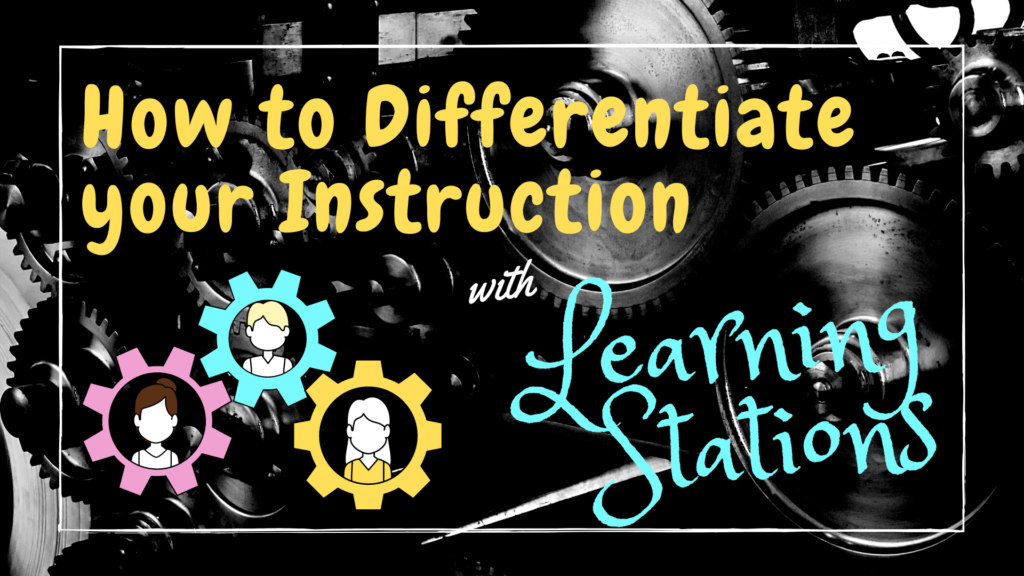
The term scaffolding is an architectural term referring to a temporary structure put on the outside of a building to hold it in place as you construct it.
What a beautiful illustration for what we do in math class!
We provide support for our students as their academic knowledge is built, until it is a strong tower able to stand on its own. Then we remove the support!
What is Instructional Scaffolding?
Scaffolding instruction is supposed to help you reach your students, especially your struggling ones, and provide them with tools to help them find success. When done correctly, the educator will implement various strategies to reach the learner at his/her level and then help them move up the ladder of success. Imagine starting at the foundation of the building and then constructing it vertically until it’s a tall skyscraper.
Some examples of strategies that incorporate scaffolding include preteaching vocabulary, giving students worked examples as they do their practice problems, or starting with more simplified versions of a problem and then increasing rigor.
Another key components of scaffolding is chunking. Where the teacher breaks the lesson into smaller, manageable bites for the student to ingest (master) before proceeding to more difficult or complex problems.

Why does Scaffolding take Longer?
Scaffolding should make your lessons take longer, not shorter, because you are having to provide extra support. You are also making sure students master the concept before moving on, which means you don’t progress the class based on the class mean’s comprehension, but you truly look for every student to master the concept.
Another reason this takes longer than traditional teaching is that scaffolding requires you to provide your students with more practice problems.
Remember that for learners to master a concept, they must have sufficient practice. But not all learners learn at the same pace. Some require more practice than most to master the concept. So an excellent scaffolding strategy to provide your students with is additional practice problems.
Getting in the Zone
Scaffolding also allows you to reach your students at their level.
Lots of math concepts build upon each other. So if students haven’t mastered certain prerequisite skills, then they are going to struggle with the grade level work. For example, try to get a student to add mixed numbers if they still don’t know how to convert fractions to common denominators.
When you scaffold your instruction, you should be able to remediate the prerequisite skills so that your students can find success (picture the building getting taller, and bottom scaffolding being removed).
By targeting your students at their level, you will be appropriately challenging them. This will make it easier for them to find success. This success will help them want to continue to be successful as they move up the latter (or the building with scaffolding in place) to more difficult math concepts.
What it looks like practically
Think about a times table challenge in your class. Every three days you give your students a times table quiz, with the goal being for all of your students to know all of their times tables (1-9). So on day one you start everyone on their one’s. You practice it for a few minutes each day, and then on day three they take the quiz.
Hopefully, they all pass, and everyone moves to their twos. This time, however, on the day of the quiz, only some students pass. Those students are advanced to work on their three’s, while the others (who didn’t pass their two’s times table quiz) continue to work on their two’s. Aftre three more days, you give everyone the quiz for their level, and so it proceeds.
This pattern continues. After a few weeks, you have students all over the place. Some are working on their nine’s while others are still aback on their two’s or three’s.
At the same time, you are providing intervention to your struggling students. Extra practice. Extra support. You’re reviewing with them. Teaching them songs, having them do reteach worksheets, etc.
This is a wonderful example of scaffolding.
Your goal is to get everyone to master all their times tables through their nine’s. But you’re reaching each student at their level. Your more advanced students are accelerated while your weaker ones are allowed to take longer, getting more practice and additional support.
No one is left behind.

Can it Work on All Skills?
I believe it can.
I have done this for my math classes for years and my students have had tremendous success.
To do so, I break each skill we are working on into its prerequisite skills. Students work on the skill that they need to develop, for as long as it takes. Some students move through the skills very quickly, while others take their time. But all find success, and all are celebrated each and every time that they do.
Want to Learn More?
Here are a few articles on learning stations:
- 7 Reasons you Should Differentiate with Learning Stations
- Challenging your Stronger Students, While Reacher your Weaker Ones
- Why You Should Create Learning Stations
Or, you can take the shortcut and read the book or enroll in the online course.

The Online Course
Learn how to create Learning Stations for your students that will give them as much practice as they need, with immediate feedback, while differentiating your instruction to reach all of your students.




